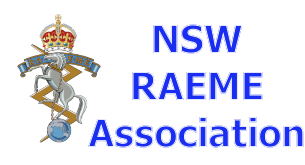World War II - The need for a new Military Camp

Ingleburn was the first purpose-built camp for the training of Australian infantry to fight in World War II. The nature of warfare had changed by World War II, becoming more technical with soldiers being required to operate new types of weapons and transport. This placed a greater emphasis on the training of recruits for fighting.
Construction as an embarkation camp began on 8 October 1939 to provide accommodation for the new 2nd AIF.
During World War II, Ingleburn operated primarily as an infantry camp, but all corps were represented including engineers, transport, signals and anti-aircraft units.
The camp was an assembly point for Army brigades, most notably, the 16th Brigade of the 6th Division, the first Australian overseas contingent. Other brigades included units from the 7th and 9th Divisions.

The Korean War
During the 1950s, Battalions destined for Korea were stationed at Ingleburn. The Korean War in 1951 resulted in changes in the size and use of the site.

National Service
National Service recommenced following the outbreak of the Korean War and by 1954 Ingleburn was a major centre for the National Service Program from 1951 till it was abolished in 1972. Many Australians experienced training at Ingleburn prior to going into a Reserve Unit.
In 1964, for the first time, the Commonwealth Government extended compulsory military training and conscripts were sent on military operations external to Australia. Prior to this, conscripts were only obliged to fight on Australian shores.
In 1973, the Army's Infantry School was moved to Singleton. The School had been a feature of the Camp since the 1960s.
Training Camp
In 1973 the Camp became the Headquarters of the Second Training Group of the Army Reserve. This remained its main function until 2000.
The Ingleburn Military Heritage Precinct
Planning & Consultation
Stakeholders have been included during the planning and consultation process. There has been enthusiastic support and endorsement of the Precinct by ex-service organisations with an attachment to Ingleburn. The consultation also included a wide range of interested people, including former recruits, occupants, civilians and service associations. Ex-service organisations have reviewed and endorsed all detail work including Precinct renovations and design of the memorial.
Heritage Benefits for the Community
The Ingleburn Military Heritage Precinct is a place of remembrance. It represents the service and self-sacrifice made by thousands of men and woman associated with the Army Camp over its long and proud life. The Precinct provides a fitting tribute to the role of Ingleburn in Australia’s military history and a place for ongoing tribute by future generations.
The military units which served at the former Ingleburn Army Camp are identified for the first time. Provision is made for ongoing meaningful use of the Precinct by those to whom it is most important – for commemorative services, quiet contemplation or major reunions and community use.
Contribution to Heritage Issues

The Ingleburn Site means a great deal to many people, having played a major role in our past, especially through the training of Australians during times of War and National Service. The Precinct recognises this national significance by creating a monument to those who served through the memorials and retained historic buildings. It will generate a sense of place and presence of Australian history, incorporating the most significant social and heritage values of the site.
The Ingleburn Heritage Assessment and Military Heritage Precinct provide excellent examples of how the memories and history of a site can be successfully integrated into the planning process for a major urban release.
POC : Bernard Connell,
Honorary Secretary,
Ingleburn R.S.L. Sub branch,
Member of the Interim Management Committee,
Ingleburn Military Heritage Precinct.
(w) 02 9600 4191 (fax) 02 9600 4057.



















